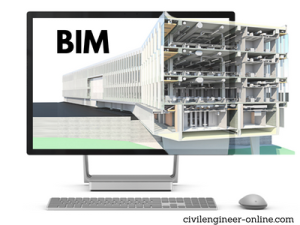
BIM, or Building Information Modeling, is a cutting-edge technology that has recently transformed the construction sector. Stakeholders can efficiently interact throughout the project’s lifecycle thanks to this digital representation of a building’s structural and functional details. BIM is essentially a collaborative method of working that involves the development, administration, and sharing of information throughout a building project.
A thorough understanding of the building’s design, construction, and operations are provided by the intelligent BIM process, which is based on 3D models. To produce a consistent and accurate depiction of a structure, it combines data from multiple sources, including the architectural, engineering, and construction (AEC) disciplines. Building systems can be designed, analyzed, simulated, and optimized using the model.

The BIM model has multiple data layers that give a thorough overview of the building’s systems, components, and structure. The model can be used to examine how well the building performs, how much energy it uses, and how sustainable it is. It can also be used to evaluate the building’s maintenance and safety needs.
How To Reduce The Cost Of Your Construction Projects? CLICK HERE to know 6 Best Ways
Reducing errors and inconsistencies in the architectural design process is one of the key advantages of BIM. Before construction ever starts, the model may identify and resolve conflicts between multiple systems and components, minimizing the need for changes and shortening project timelines. Additionally, it makes sure that everyone involved is using the same data, minimizing the chance of mistakes and misunderstandings.
All stakeholders can effectively collaborate with one another throughout the course of the project because of the collaborative platform provided by BIM. It lessens the possibility of misunderstandings and delays by enabling architects, engineers, contractors, and owners to communicate and share information in real time. Better decisions are made as a result of this teamwork, which eventually makes the building project more effective and economical.
Many governments throughout the world now require the use of BIM in public projects, making it a crucial tool in the construction sector. For instance, the US government has mandated BIM for all federal construction projects, while the UK government has set a goal of attaining BIM Level 2 for all public projects.
Large construction businesses have embraced the technology, increasing the use of BIM in the private sector. Large infrastructure projects including airports, hospitals, and sporting arenas are being designed and built using BIM as normal procedure.

BIM is used in building operations and maintenance in addition to design and construction. A digital twin of the building, which offers a thorough perspective of the building’s systems and components, can be made using the BIM model. The building’s performance can be tracked and analyzed, along with maintenance needs and energy efficiency goals, using this digital twin.
Additionally, the advancement of sustainability in the building sector has been significantly aided by BIM. The technique can be used to evaluate the energy efficiency of a building and pinpoint opportunities for development. It can also be used to assess a building’s environmental effects, including its carbon footprint, and suggest strategies to lessen them.
How to Fix Ceiling Covers in Constructions? To Know More CLICK HERE.
In conclusion, building information modeling is a cutting-edge technology that has completely changed the construction sector. All stakeholders can effectively collaborate with one another during the course of the project because, of the collaborative platform, it offers.
The use of BIM in public projects is now required by many governments, making it a crucial tool in the construction sector. In the private sector, where many sizable construction businesses have adopted the technology, its use has also increased. BIM has significantly advanced sustainability in the construction sector and is expected to continue to grow in significance in the coming years.





